It continued to snow today and more and more birds visit the garden in search of food. Today we had 8 Common Crossbills, or Red Crossbills as they are called in USA.
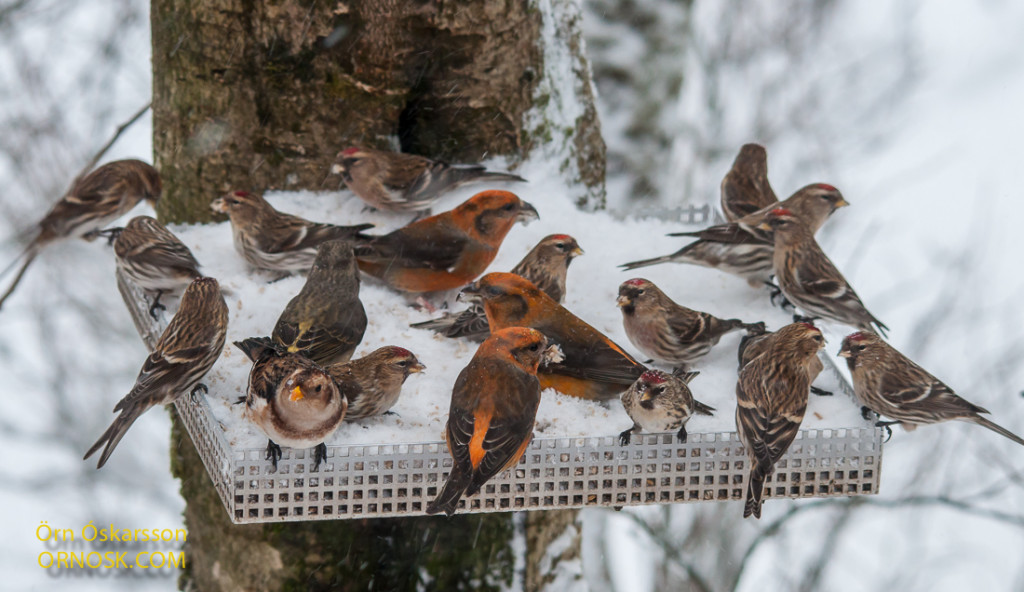
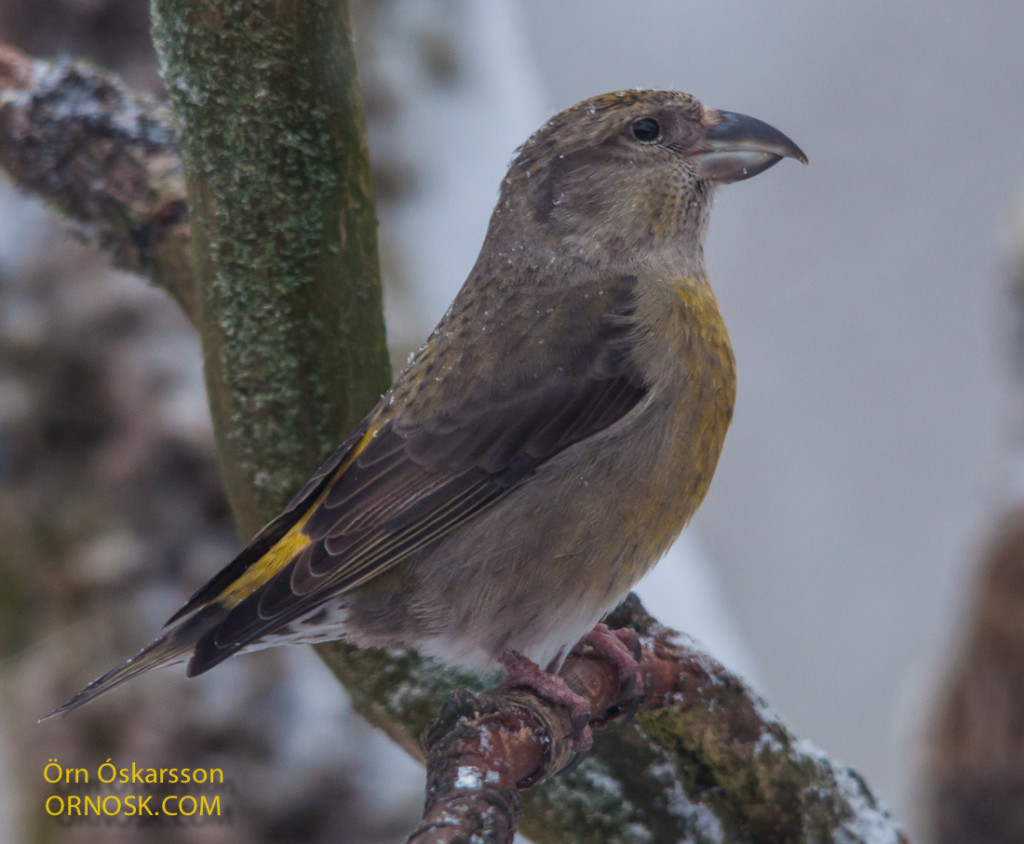

These are photoes from today.
It continued to snow today and more and more birds visit the garden in search of food. Today we had 8 Common Crossbills, or Red Crossbills as they are called in USA.



These are photoes from today.
American vagrants are rare in Iceland but usually there is a bird or two that accidentally gets blown over here every year. The Red-eyed Vireo (Vireo olivaceus) is one of the most common small American vagrants and has been recorded here 21 times. This little vagrant has been seen twice in Selfoss and once here in our garden.
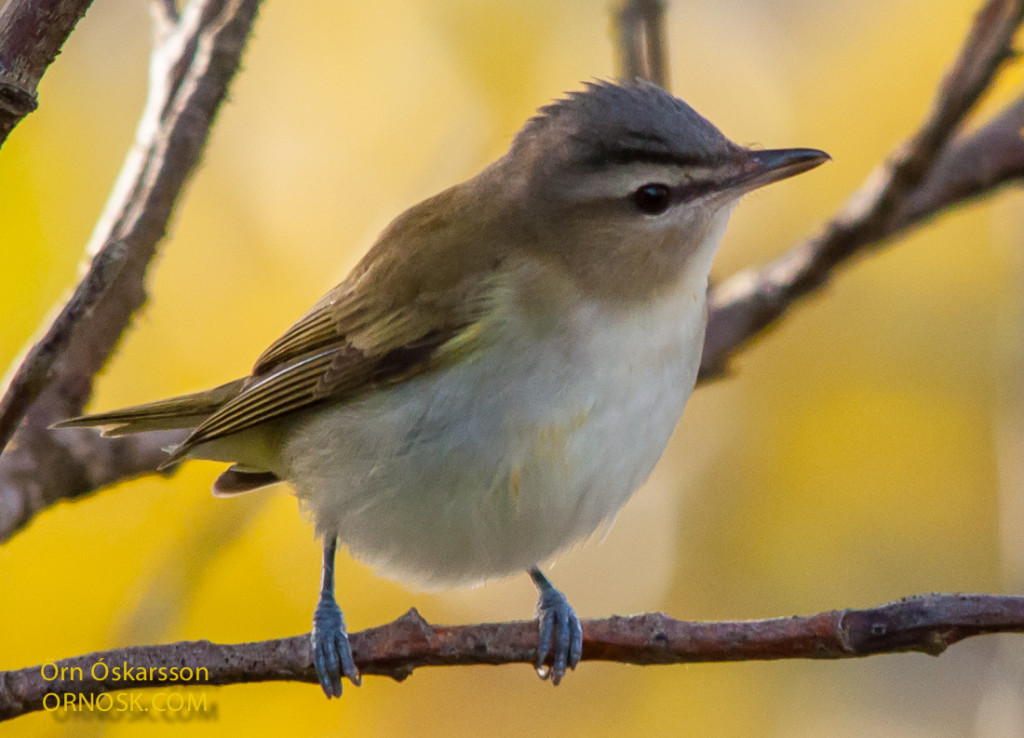
These photoes are taken in Stokkseyri, South Iceland, September 30, 2014.
The Shelduck (Tadorna tadorna) is a new breeeding bird in Iceland. The first known breeding was recorded in 1990 in Eyjafjörður, North Iceland.
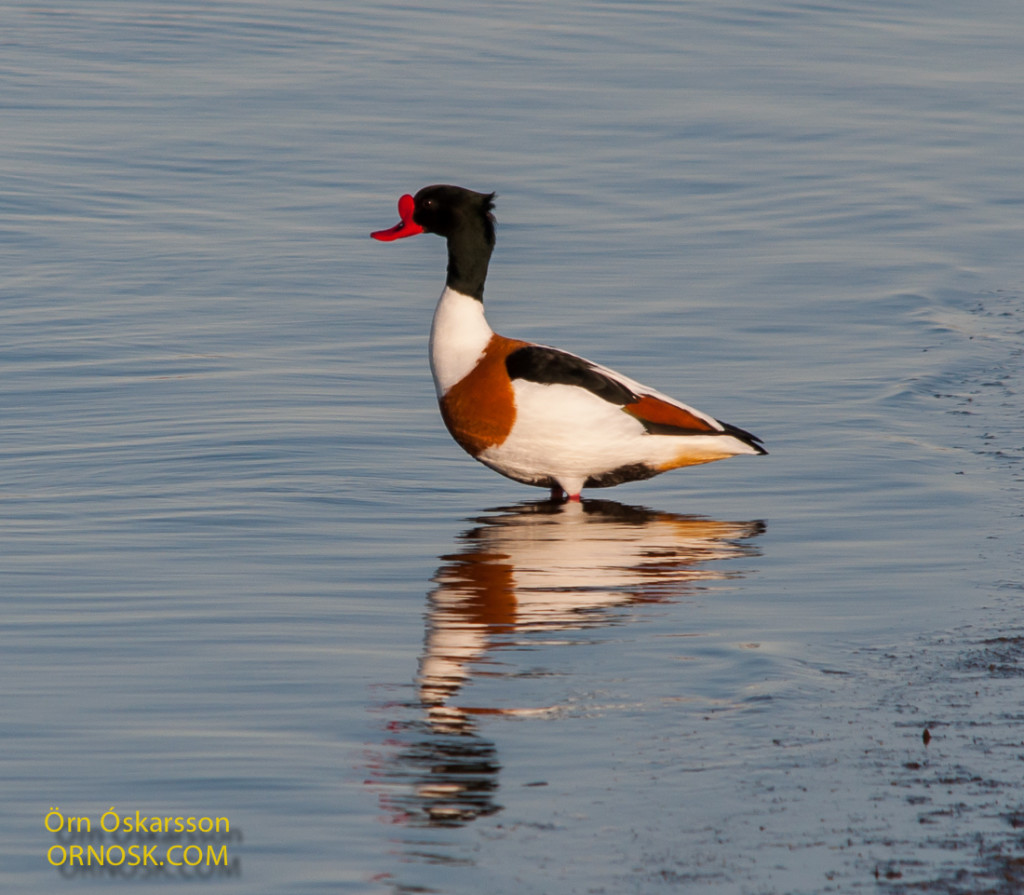
Shelducks were first seen by the river Ölfusá in Selfoss about 10 years ago. They have slowly been increasing in numbers and last spring 16 Shelducks were spotted by the river near Selfoss. They are seen on the river every year with their chicks but nests have never been found.
Photoes taken by the river Ölfusá.
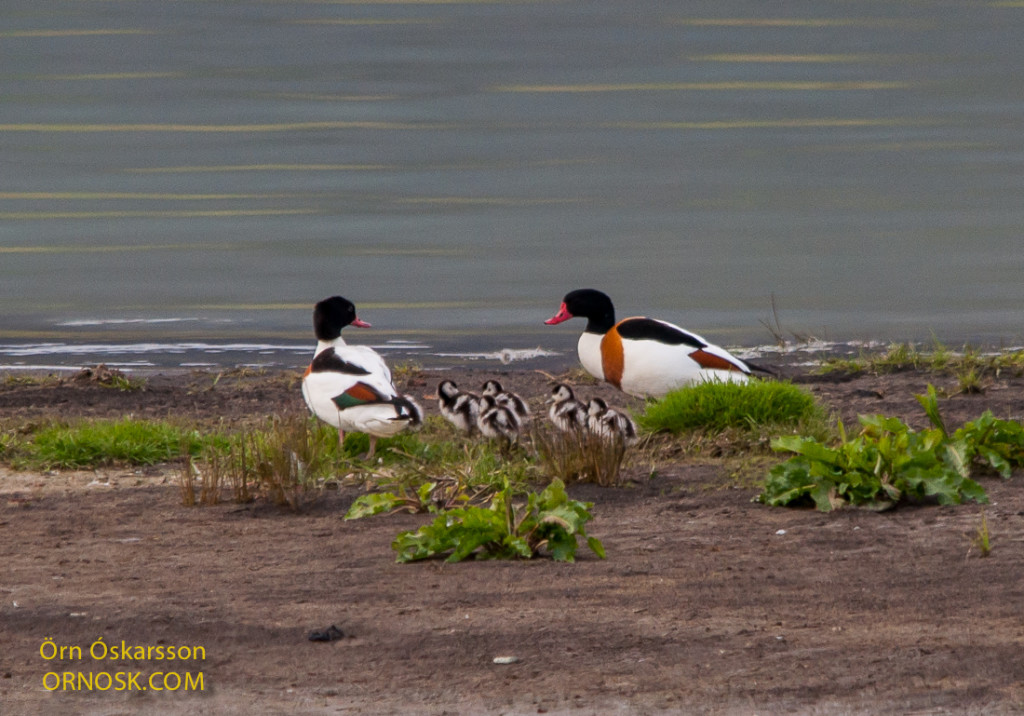
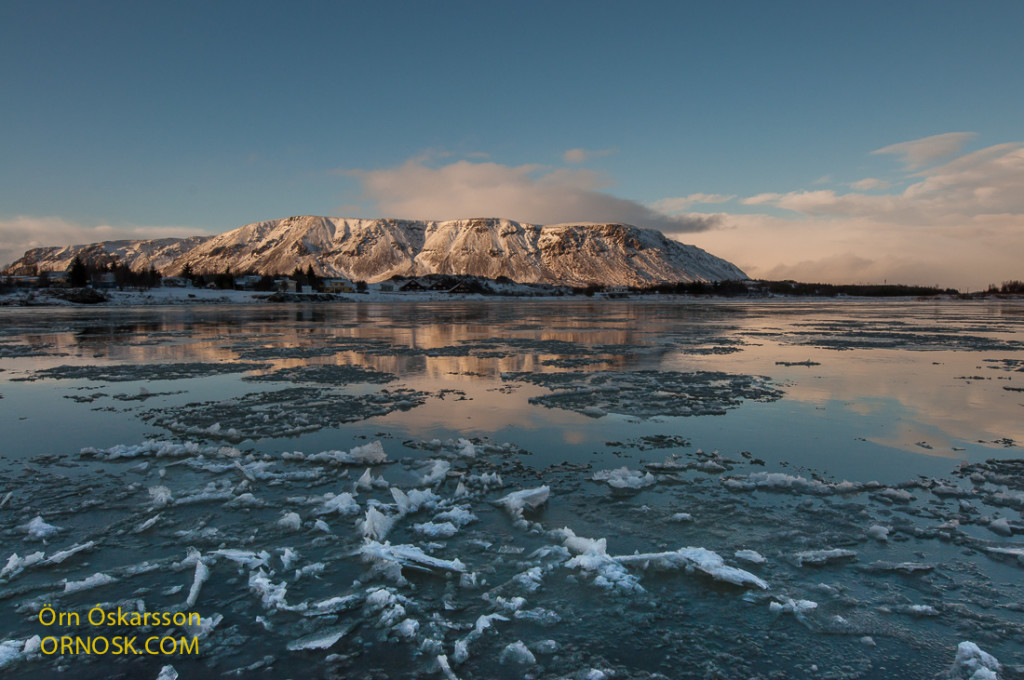
The days are getting longer and although summer is still a long way off we have begun to think of spring. It’s time to start preparing by sowing summer plants and vegetables. The Icelandic summer is so short that to secure a harvest in the autumn preparations have to begin early. That will be this weekend’s project 🙂
During the winter time the Ptarmigan takes on the white colour of the snow, Being white offers protection from birds of prey and foxes. It is difficult to spot the Ptarmigan nestling in the dense forest.
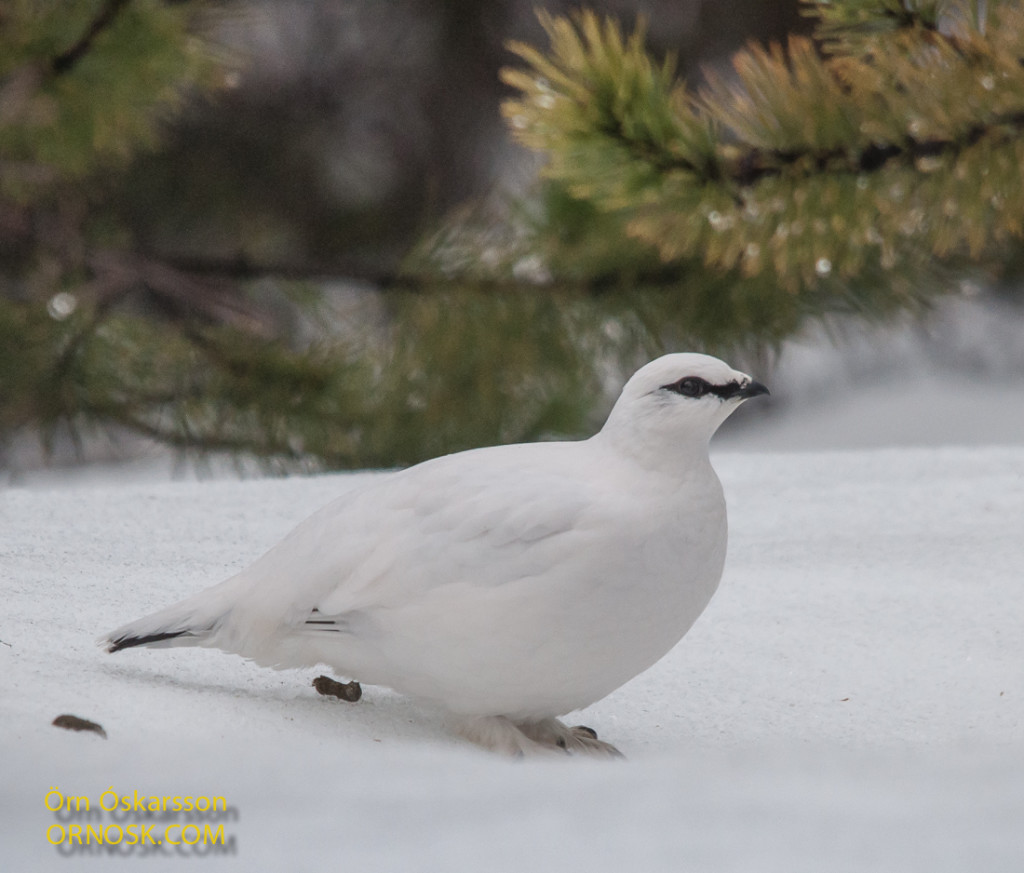
This male Ptarmigan is awaiting spring in a pine grove in Grímsnes, South Iceland. Photo taken last weekend.
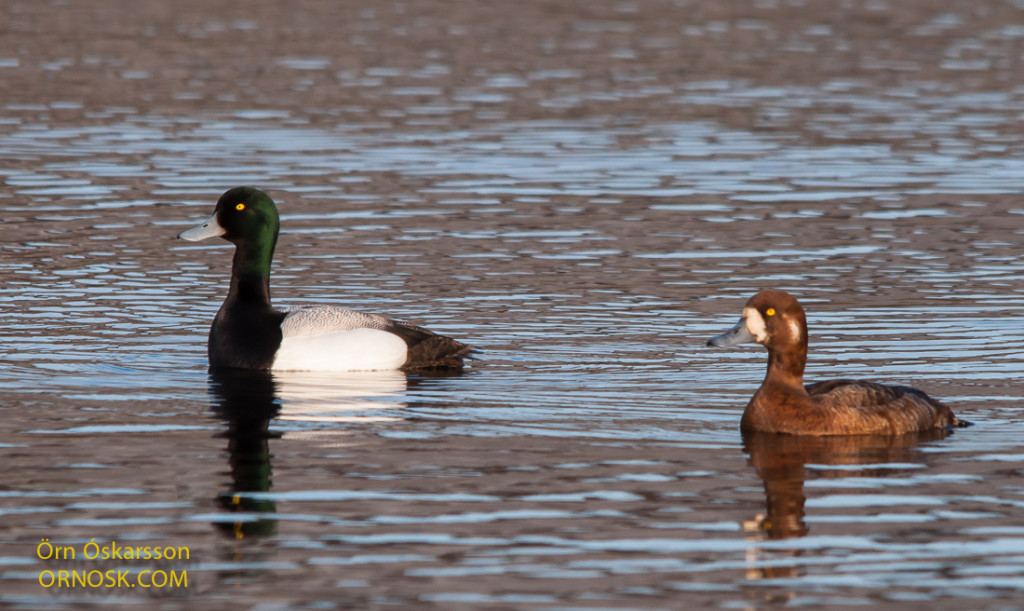
The Scaup (Aythya marila) is a common duck in ponds and lakes both in the Icelandic lowlands and highlands, especially in the North and the East. The breeding populations counts around 2000-5000 pairs. Most of them leave the country in the autumn and overwinter by the shores of Irland and Britain.

The Scaup is a common breeding bird in Veiðivötn in the southern interior of Iceland. There the males gather in big groups in July and shed, or moult,their feathers . You can see up to 700 birds in a group. Scaups are synchronous moulters, they change their flight feathers all at once in a period of two to four weeks. During this period they cannot fly.
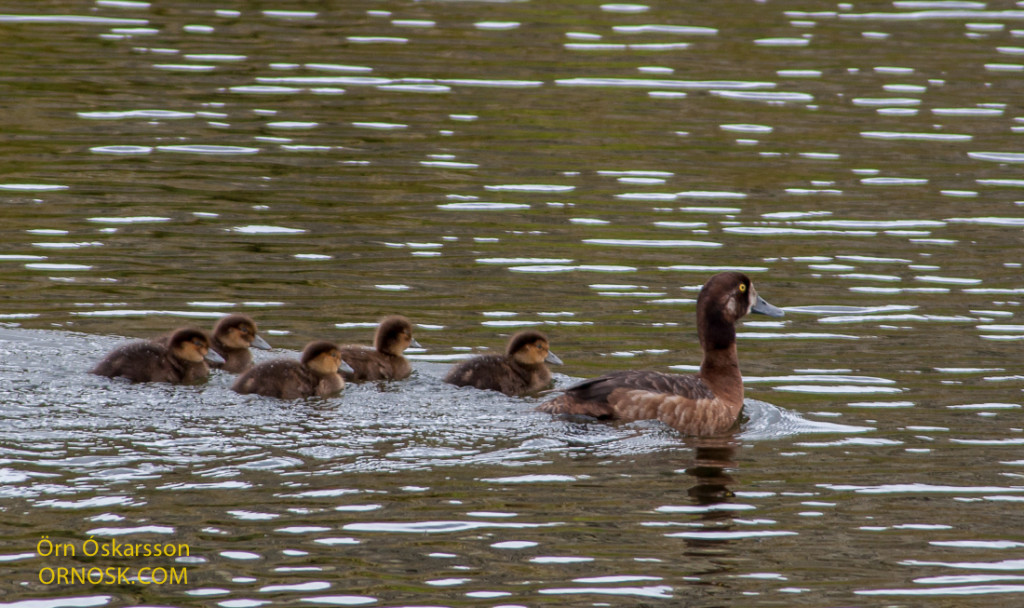
The photoes are taken in Veiðivötn, in the South Interior.
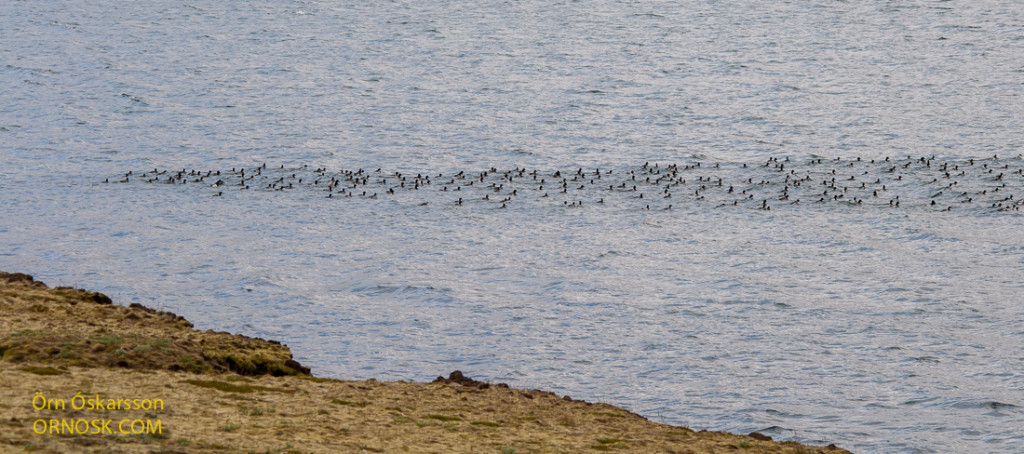
Winter Light Festival was opened last night with Marcos Zotes light installations. Zotes took one of Reykjavík City‘s best known landmark, Hallgrímskirkja church, and transformed it into a mesmerising visual experience.
Nikon D90, Sigma 30mm
Despite the cold and the snow the Common Crossbill has started wooing. In South Iceland they start breeding in February and the chicks hatch in March.
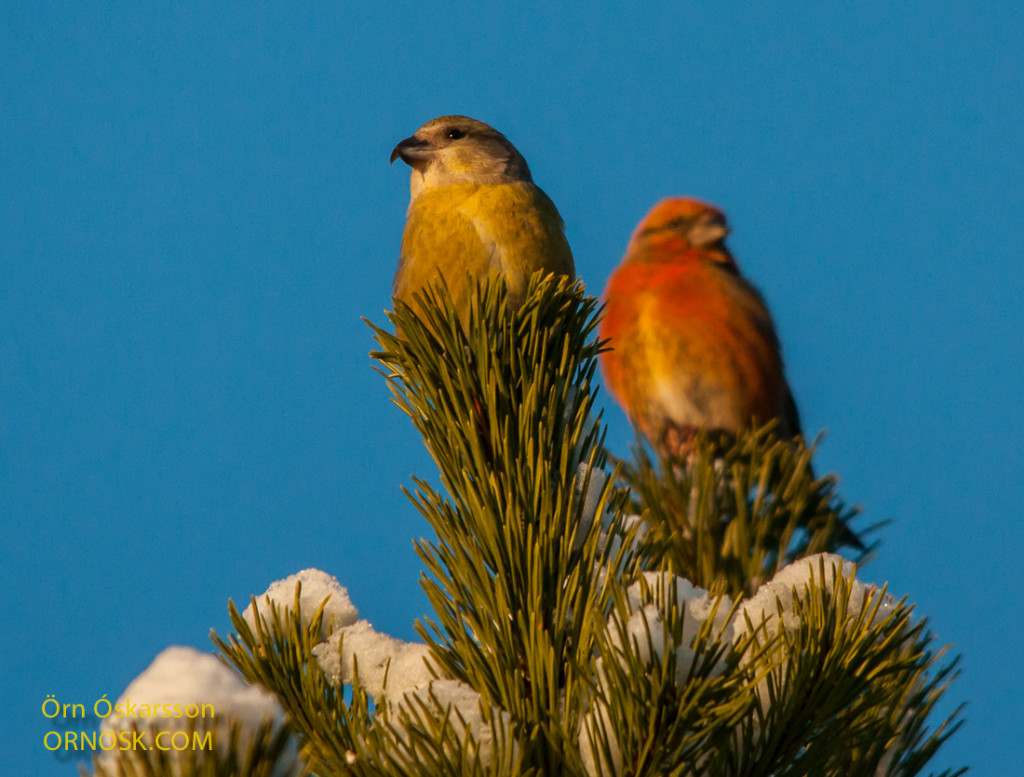
The Common Crossbills are nothing less than spectacular when they sit in the top of a spruce or pine tree . Their colours match beautifully with the green of the treees, the snow and the blue sky.
The photo of this pair was taken February 2, in Grímsnes, South Iceland.